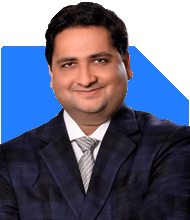.jpg)
Hello
I am 31 years of age and no debt on me. I am married and my wife is a housemaker and I have no child now but planning to have. Currently after all my expenses (including travel, medical insurance etc) and keeping few additional for any contingency I am able to save money/month in following forms.
PF: 40000 (including VPF, Employee and Employers Contribution)
PPF: 12500
SIP: 53000 (33% distribution across large, mid and small cap. 10% stepup annually)
LIC: 6500 (endowmennt policy for 25 years)
FD: 70000
Gold: 35000 (in jewellery scheme)
My current savings across above mentioned portfolio is around 75 lacs (FD: 25 lacs, Gold: 15 lacs, MF: 10 lacs, PF: 10 lacs, EPF: 15 lacs)
I dont have my personal home and I am not considering to buy any as my parent's home is sufficient enough for me to live. I am a moderate risk taker and want to enjoy life considerably reasonably throughout. Want to save good amount for future uncertainty, child education, travel and hospitalization. Could you please assess my savings and let me know whether any changes needed?
Ans: I will assess your financial situation carefully and provide insights that cover all important angles. This will help you plan better for your future, including child education, travel, and medical needs.
Current Savings Portfolio – Analyzing Strengths
Your savings of Rs. 75 lakhs across various instruments show strong discipline.
Regular PF contributions of Rs. 40,000/month reflect good retirement planning.
PPF savings add safe, long-term tax-free growth to your portfolio.
SIP investments of Rs. 53,000/month spread across large, mid, and small caps show equity exposure.
The 10% annual step-up in SIP shows you want to increase investments steadily.
FD holdings of Rs. 25 lakhs provide stable and safe fixed income.
Gold worth Rs. 15 lakhs, mainly jewellery scheme, adds portfolio diversification.
LIC endowment policy contributions of Rs. 6,500 monthly add insurance and savings combined.
Your mix shows a good balance between safety, growth, and liquidity.
Areas to Review for Better Alignment
Endowment policies generally offer lower returns compared to mutual funds.
LIC endowment policy ties up money for long duration with less flexibility.
You should consider surrendering LIC endowment policy and reinvesting in mutual funds.
Actively managed mutual funds through MFDs offer better returns than direct plans.
Your SIP allocation across large, mid, and small caps is good but must be monitored regularly.
Moderate risk profile means balance equity with debt or hybrid funds to reduce volatility.
FDs provide safety but weigh against inflation risk which reduces real returns.
Gold in jewellery form has low liquidity and incurs making charges.
Consider investing gold in paper form or sovereign gold bonds for better returns and liquidity.
Suggested Portfolio Adjustments for Growth and Safety
Replace LIC endowment policy with a well-diversified equity and balanced fund portfolio.
Increase allocation in hybrid mutual funds to reduce overall portfolio volatility.
Maintain around 30-40% in safer debt or balanced funds due to moderate risk appetite.
Continue SIPs with gradual increase but review fund performance every 6 months.
Consider liquid funds or short-term debt funds for contingency corpus.
Reallocate some FD money into better-performing debt funds with tax efficiency.
Switch gold jewellery exposure to financial gold instruments to reduce costs and improve returns.
Build an emergency fund equivalent to 6-12 months of expenses in liquid assets.
Child Education and Future Expenses Planning
Education costs are rising rapidly; early planning helps manage inflation impact.
Start a dedicated education fund through balanced or equity mutual funds.
Systematic Investment Plans with annual step-ups are ideal for long-term goals.
Consider increasing SIP amounts as your income grows to build a larger corpus.
Maintain flexibility to adjust investments if family needs or market conditions change.
Insurance cover for family’s health and life should be adequate to secure child’s future.
Travel and Lifestyle Expenses Consideration
Allocate a reasonable portion of savings for lifestyle enjoyment without hampering goals.
Systematic withdrawals from balanced funds can fund travel and leisure expenses periodically.
Ensure that lifestyle spends do not disrupt emergency savings or long-term investments.
Keep travel funds separate from core investment corpus to avoid forced liquidations.
Medical and Health Insurance Analysis
You have accounted for medical insurance; review the sum insured periodically.
Consider increasing health cover especially with plans for children.
Allocate funds for critical illness or medical emergencies outside insurance coverage.
Maintain liquid investments like short-term debt funds to meet sudden medical expenses.
Health emergencies can impact finances heavily; planning liquidity is critical.
Tax Efficiency and Investment Management
Your PF and PPF contributions offer good tax saving and long-term compounding.
Mutual funds should be chosen with tax efficiency in mind.
Avoid frequent switching to reduce short-term capital gains tax impact.
Active fund management by MFDs can help you select tax-efficient funds.
Regular review and rebalancing help you align with tax and investment goals.
Stay aware of LTCG tax at 12.5% above Rs. 1.25 lakh on equity funds.
Role of Professional Guidance and Regular Review
A Certified Financial Planner can help you optimize asset allocation.
Expert guidance prevents emotional decisions during market fluctuations.
Regular portfolio review every 6-12 months ensures alignment with changing goals.
MFDs offering regular plans help manage investments actively and monitor performance.
Avoid self-managed direct plans without professional help to reduce risks.
Active fund managers adapt to market changes better than passive index funds.
Index funds do not suit moderate risk takers who need professional intervention.
360-Degree Solution Summary
Your portfolio shows good discipline and a fair mix of assets.
Shift away from LIC endowment policy to better growth instruments.
Increase allocation to balanced and debt funds for risk moderation.
Convert gold jewellery to financial gold for liquidity and cost efficiency.
Maintain emergency fund in liquid instruments to meet unforeseen expenses.
Plan for child education with increasing SIPs in diversified equity funds.
Keep lifestyle and travel funds separate to avoid disturbing long-term goals.
Ensure adequate health insurance and liquidity for medical contingencies.
Use CFP support for portfolio review, rebalancing, and tax planning.
Avoid direct and index funds; prefer regular funds through MFD with CFP guidance.
Final Insights
Your current savings are solid but can be optimized for better growth and safety.
Transition from traditional endowment plans to actively managed mutual funds.
Diversify across equity, balanced, debt, and financial gold instruments.
Regular SIPs with planned step-ups are good but monitor fund performance closely.
Maintain liquid funds and insurance coverage for emergency protection.
A disciplined, reviewed, and balanced portfolio suits your moderate risk profile.
Professional guidance from a Certified Financial Planner is key to success.
This approach balances growth, safety, lifestyle enjoyment, and future needs well.
Best Regards,
K. Ramalingam, MBA, CFP,
Chief Financial Planner,
www.holisticinvestment.in
https://www.youtube.com/@HolisticInvestment












.jpg)


.jpg)









